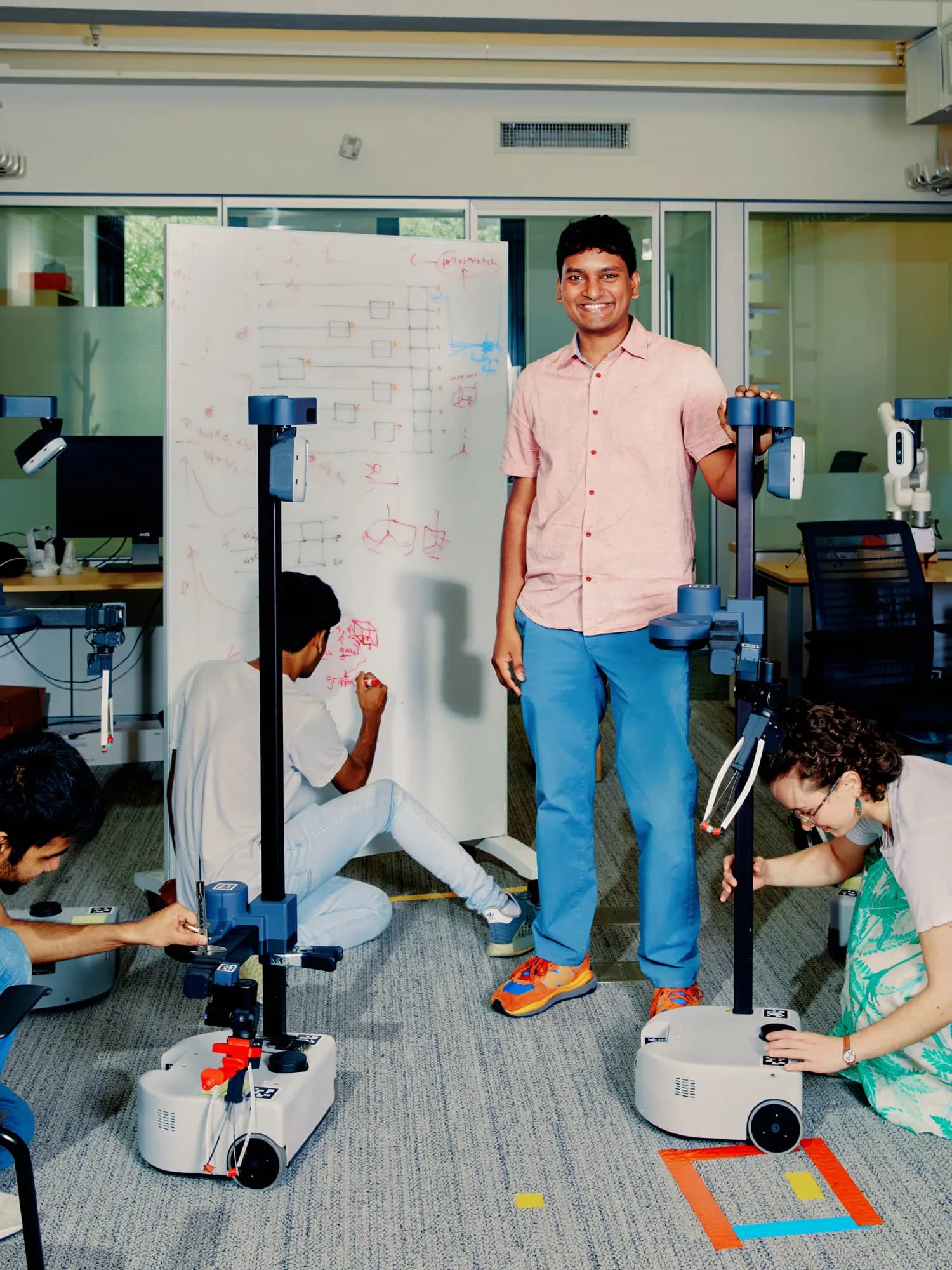
The Robotics Roundup is a weekly newspost going over some of the most exciting developments in robotics over the past week.
In today’s edition we have:
- ‘Brainless’ Robot Can Navigate Complex Obstacles
- Robots that learn as they fail could unlock a new era of AI
- When robots imitate life: Project explores better way to train AI
- Magic, cooking and droids inspire this roboticist
- A Useful, Non-Humanoid Robot: Just a Pair of Arms and Legs
‘Brainless’ Robot Can Navigate Complex Obstacles
Researchers at North Carolina State University have developed a “brainless” soft robot capable of navigating complex and dynamic environments without human or computer direction. The robot, made of ribbon-like liquid crystal elastomers, utilizes an asymmetrical design to turn and maneuver through obstacles. When placed on a surface hotter than the ambient air, the robot rolls due to the contraction of the portion in contact with the surface. The asymmetrical design allows the robot to exert more force on one end, enabling it to turn without making contact with objects. The researchers demonstrated the robot’s ability to navigate mazes, including those with moving walls, and fit through narrow spaces. The work could lead to innovative applications for soft robot design, particularly in harnessing heat energy from the environment.
Robots that learn as they fail could unlock a new era of AI
Lerrel Pinto, a computer science researcher at New York University, is working on training robots to perform various household tasks using self-supervised learning. He aims to collect large amounts of data by having robots create and label their own training data, as well as learning from human demonstrations.
When robots imitate life: Project explores better way to train AI
Researchers at Cornell University and the University of Illinois at Chicago are working on a project called superhuman imitation learning. The goal is to train robots and AI models to perform tasks more efficiently by providing them with lots of imperfect demonstrations. Instead of simply copying the demonstrations, the system will piece together a better approach. The project, which has received a $1.2 million grant from the National Science Foundation, will focus on training robots to assist people at home. By learning from multiple teachers and diverse training, the researchers hope to make the robots more efficient and adaptable.
Magic, cooking and droids inspire this roboticist
Dennis Hong, a roboticist and the founding director of the Robotics and Mechanisms Laboratory (RoMeLa) at the University of California, Los Angeles, is working on various robot inventions. One of his projects is a cooking robot called Project YORI, which aims to be able to cook a full menu of food. In addition to YORI, Hong has created other robots such as a car that can be driven by the blind and a two-legged robot designed to extinguish fires on Navy ships. Hong believes that robots can perform tasks that humans are unable or unwilling to do, and his goal is to bring happiness to people through his inventions and hobbies, including cooking and magic tricks.
A Useful, Non-Humanoid Robot: Just a Pair of Arms and Legs
German company Fraunhofer has developed evoBOT, a non-anthropomorphic robot designed for carrying cargo. Unlike humanoid robots, evoBOT has a pair of legs and arms without a torso or head. The robot is based on the principle of an inverse pendulum, allowing it to maintain balance and move on different surfaces. Fraunhofer envisions evoBOT being used in both commercial and domestic settings for goods handling and collaborative assistance for humans.


